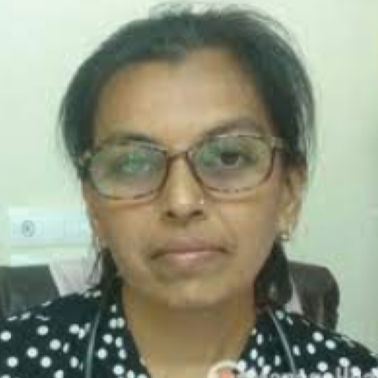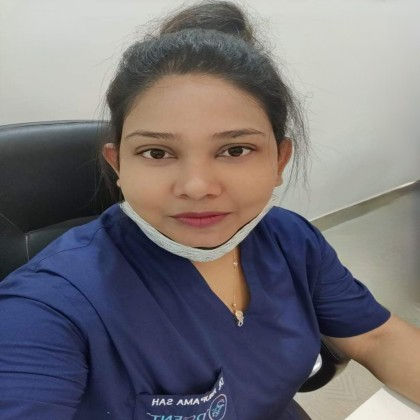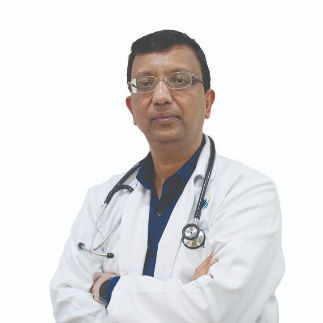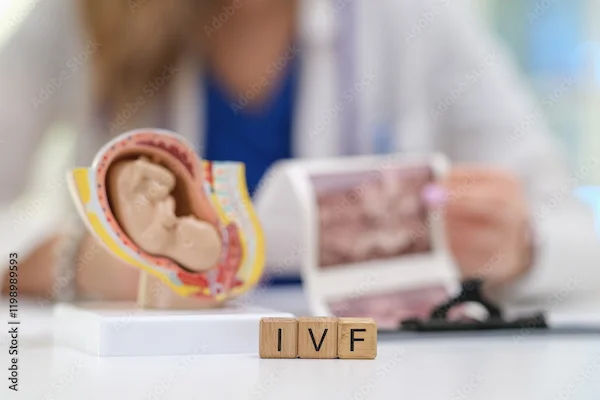How to Reduce Belly Fat After C-Section?
Learn how to reduce belly fat after a C-section with safe exercises, balanced nutrition, proper stress management, and expert medical guidance. Discover the foods to avoid and the role of breastfeeding in weight loss.

Written by
Last updated on 3rd Jul, 2025
A caesarean birth, or C-section, is a surgical operation that involves delivering a baby through incisions in the woman's abdomen and uterus. Now, for most individuals, the body undergoes several changes after the delivery. One of the common ones in this regard is the increase in belly fat.
While there are several factors contributing to this aspect, a person can gradually reduce it with the right exercise, nutrition and other factors. Get a comprehensive insight in the article below.
Factors Contributing to Belly Fat Post-C-section
Some of the major factors contributing to belly fat after a C-section are:
Pregnancy: The most common cause of post-C-section issues is an increase in intra-abdominal pressure generated by the baby pressing down on the abdomen during the pregnancy. This extra stress can stretch the muscles of the abdomen and give the appearance of a stomach bulge.
Weight Gain: During pregnancy, weight gain is normal. This may lead to the formation of abdominal fat. As the baby develops, the increased weight can put tension on the abdominal muscles, causing them to weaken. It can lead to a buildup of extra fat and adipose tissue in the lower abdomen, resulting in belly fat.
Hormonal Changes: Some females experience hormonal changes that may cause their bodies to store more fat tissue than normal. Furthermore, relaxin, a hormone generated during pregnancy, has been shown to loosen ligaments and connective tissues, which makes it difficult to hold the abdominal muscles together, resulting in a stomach bulge.
Genetics: In certain cases, genetics also influence the development of belly fat. Some females are born with weaker abdominals or without connective tissue. This can impair the flexibility of the abdominal wall, which causes an increase in belly fat.
What are the Safe Exercises to Reduce Belly Fat After C Section?
Listed below are some of the safe exercises a female can try after a C-section:
Swimming: An aerobic workout that tones muscles and burns fat.
Walking: A cardio exercise that strengthens muscle tissue and burns fat.
Yoga: A stress-relieving exercise that strengthens the core and gives relaxation.
Gentle Jogging: A low-impact activity that might help to get back in shape.
Leg Slides: A gentle exercise that strengthens the core muscles.
Knee Touchdowns: Targets the core muscles and strengthens the abdominal area.
A female should consult with the healthcare provider before starting any exercise after surgery.
What are the Foods to Incorporate for Fat Loss After a C-Section?
Here are some foods that can support fat loss after a C-section:
Items rich in soluble fibre, such as veggies, legumes, and fruit
Meals containing protein, like meat, fish, eggs, and dairy products
Seafoods, such as fatty fish like tuna and salmon
Foods containing probiotics, such as yoghurt, kefir, sauerkraut, and kimchi
Green tea
The foods to avoid for reducing belly fat after a C-section are as follows:
Avoid Sugary Foods: High sugar intake is linked to weight gain and abdominal fat. Limit processed foods like candies and sugary drinks.
Avoid Trans Fats: Stay away from processed foods like margarine and hydrogenated oils, as they contribute to weight gain and inflammation in the body.
Moderate Alcohol Intake: Excess alcohol consumption contributes to increased belly fat. Drink in moderation to maintain a healthy balance.
Role of Breastfeeding in Weight Loss After a C-Section
Breastfeeding may help a female lose the weight she gained while pregnant. It burns calories and helps with weight loss. Other factors that influence weight loss include proper calorie intake, physical activity, and sleep quality.
Therefore, breastfeeding for at least three months, along with maintaining the other aspects, can help females recover their pre-pregnancy weight.
Managing Stress and Sleep After C Section
Stress may lead to significant weight gain by causing the production of cortisol, a hormone that stimulates hunger and promotes fat accumulation, particularly around the belly. It also slows down the metabolism, aggravating weight gain. In this regard:
Getting adequate sleep is crucial to keep a healthy metabolism.
Poor sleep can cause hormone imbalances, increase appetite, and impair the body's ability to burn calories effectively.
Maintaining a good sleep routine can help control hunger and help in postpartum weight management after a C-section.
Medical and Professional Support for Postpartum Recovery
Before starting any postpartum exercises, it is always a good idea to consult with the doctor. The female body needs time to heal, and getting professional advice ensures that a person chooses safe and effective exercises for recovery:
Physiotherapists can help a woman regain strength and mobility after a C-section, while nutritionists can guide her on the best foods to support healing and energy levels. Therefore, together, both can make the recovery smoother and healthier.
A postpartum support belt also called a belly band, can help strengthen the core muscles and reduce the appearance of belly fat. The belt supports abdominal muscles, reduces swelling and makes the stomach appear flat.
Common Myths and Misconceptions of Reducing Belly Fat
Reducing belly fat after a C-section is a typical worry among new mothers. However, various myths and misconceptions might result in inefficient or even hazardous procedures. Here are some common misconceptions, with clarifications:
Myth: Spot Reduction is Effective
Many people think doing abdominal workouts will burn belly fat, but that's a myth. Fat loss happens all over the body and not just in one area. The best way to lose belly fat is through full-body workouts and a healthy and balanced diet.
Myth: Wearing a Postpartum Belt Will Remove Belly Fat
Postpartum support belts can provide support and improve posture, but they do not promote fast fat reduction. Using these belts alone, without including good nutrition and exercise, is unlikely to provide significant results.
Myth: Breastfeeding Ensures Significant Weight Loss
While breastfeeding can burn more calories and may help some females lose weight, it is not a foolproof approach for decreasing belly fat or weight loss. Individual results vary, and breastfeeding should be combined with other healthy lifestyle choices for better benefits.
Understanding these myths is essential for creating achievable goals for losing abdominal belly fat after a C-section. Always consult with a healthcare doctor before making any changes to a postpartum schedule.
Conclusion
Reducing belly fat after a C-section requires a combination of safe exercises, a healthy diet, proper stress management, and good medical care. Always contact a healthcare expert before beginning any postpartum fitness plan to ensure a healthy recovery. With the appropriate technique, new moms may rebuild strength, enhance their general health, and develop confidence in their postpartum journey.
Consult Top Bariatricians for Personalised Plans
Consult Top Bariatricians for Personalised Plans
Dr. Kavitha Killaparthy
Dermatologist
23 Years • MBBS,DIPLOMA(DERMATOLOGY,VENEREOLOGY,LEPROSY)
Hyderabad
JDS Skin & Hair Clinic, Hyderabad

Dr. Saheli Dasgupta
Paediatrician
10 Years • MBBS, MD (Paediatrics), Indian Diploma of Paediatric Critical Care Medicine
Kolkata
Sristi Polyclinic, Kolkata

Dr. Dhanraj K
General Physician/ Internal Medicine Specialist
25 Years • MBBS, MD Internal Medicine - Osmania Medical College, Hyderabad
Hyderabad
Apollo Hospitals Jubilee Hills, Hyderabad
(375+ Patients)

Dr. Mona Yadav
Obstetrician and Gynaecologist
19 Years • MBBS, MD (Obstetrics & Gynaecology)
Dombivli
Nulife multispeciality, Dombivli

Dr. Anupama Kumari
Dentist
7 Years • BDS, MDS (Conservative Dentistry & Endodontics)
Chhapna
RA Dent Clinic, Chhapna
Consult Top Bariatricians for Personalised Plans

Dr. Anand Ravi
General Physician
2 Years • MBBS
Bengaluru
PRESTIGE SHANTHINIKETAN - SOCIETY CLINIC, Bengaluru

Dr. Aloy Jyoti Mukherjee
General Surgeon
20 Years • MBBS, MS, MNAMS, FALS, FMAS, FIAGES, Robotic
Delhi
Apollo Hospitals Indraprastha, Delhi

Dr. Sunil Kaul
General Surgeon
30 Years • MBBS, MS, FICS, FIMSA, FMAS
Delhi
Apollo Hospitals Indraprastha, Delhi
(25+ Patients)

Dr. Saket Goel
General Surgeon
27 Years • MBBS, MS (Surg.)
Delhi
Apollo Hospitals Indraprastha, Delhi
(100+ Patients)

Dr Anshuman Kaushal
Minimal Access/Surgical Gastroenterology
24 Years • MS FNB (MAS) FACS FCLS FIAGES FALS (BARIATRIC) FMAS
Delhi
Apollo Hospitals Indraprastha, Delhi



.webp)
